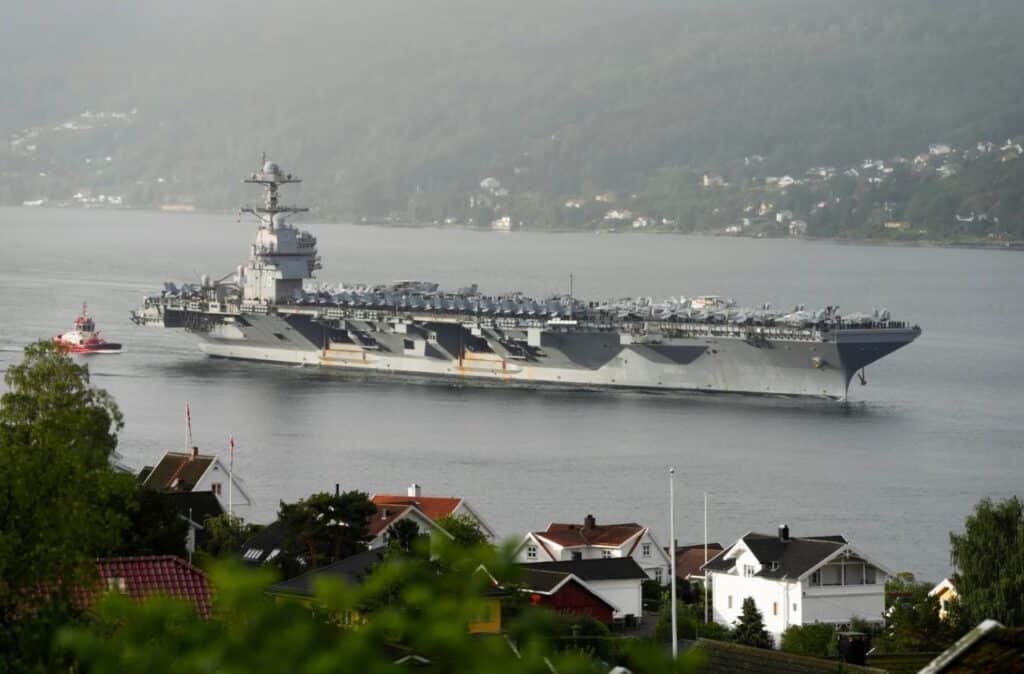US Aircraft Carrier Heads Toward Venezuela in Show of Force

The U.S. Navy’s most advanced aircraft carrier, the USS Gerald R. Ford, is moving toward waters off Venezuela in a display of American military power not seen in Latin America for decades.
The deployment is part of Operation Southern Spear, a Trump administration mission the White House says is aimed at combating drug trafficking. Once the Ford arrives, the operation will involve nearly a dozen U.S. Navy ships and about 12,000 sailors and Marines.
Officials, including Secretary of State Marco Rubio and Defense Secretary Pete Hegseth, insist the focus is on «narcoterrorist» networks moving cocaine toward the U.S. Critics and some security experts, however, argue that an aircraft carrier adds little to anti-drug missions and is instead meant to increase pressure on Venezuelan President Nicolás Maduro, whom Washington does not recognise as the country’s legitimate leader.
Analysts are divided over whether U.S. warplanes might eventually strike targets inside Venezuela. Some, like defense expert Bryan Clark, say the carrier likely wouldn’t have been deployed without a willingness to use force, while others believe it is primarily a tool of deterrence.
Venezuela has responded with what it calls a «massive» mobilisation of troops and civilian militias, staging readiness drills with land, air, naval and missile units. Maduro, who faces U.S. narcoterrorism charges, accuses Washington of seeking regime change under the cover of anti-drug operations.
The buildup has drawn criticism from some Latin American leaders, rights groups and U.S. lawmakers worried about escalation. But Senate Republicans recently blocked an effort to limit Trump’s authority to launch strikes against Venezuela, underscoring how the confrontation could deepen in the coming weeks.

